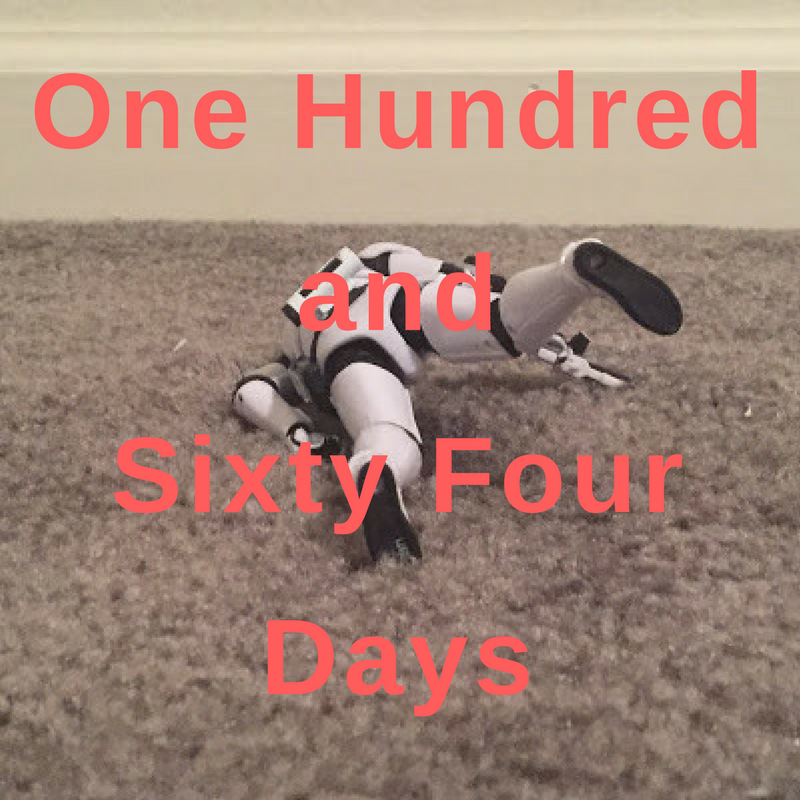
On the Floor of the Boutique, Vol. 1
Mixed by Fatboy Slim
In the rush to write premature obituaries for the compact disc, more than a few important things carry the risk of being forgotten. Like any medium the CD has its share of weaknesses, but more than a few strengths as well. (This is opposed to the cassette, whose only real strengths at the time were its size, portability, and recordability, the first two eventually eclipsed by smaller and more portable formats with far greater fidelity, and the third finally superseded by the spread of CD burners at the tail end of the nineties.) The CD had the advantage over cassettes in terms of fidelity and longevity (tape fidelity decreased with every play), and over vinyl in terms of length, size, and again, longevity. The question of fidelity in regards to compact disc sound quality in relation to vinyl is complicated by a number of factors, some of which are simply too technical for all but the most committed audiophiles. But for many listeners, the "warmth" and "personality" (grating pops and clicks) they ascribe to vinyl is actually distortion based on old media and poor equipment. A new vinyl record pressed from analog master tapes is indeed excellent, but will degrade every time it is played and requires expensive equipment to be properly appreciated.
Not so for the humble CD. I can go to my closet and pull out a twenty-year old CD and it will sound the same - just as good or bad as its mastering - as the day I bought it, even if I've played it every day in the intervening time. I don't need a particularly elborate piece of equipment to enjoy the sound. I don't own an expensive stereo, which surprises some people. I listen to music on my computer or in the car, or on headphones. Contrary to what someone like Neil Young would have you believe, humans do not possess super ears. There are only so many frequencies we can hear, and any attempt to increase fidelity beyond these frequencies is quixotic, unless your goal is to play Steely Dan for your dog.
The story goes (possibly apocryphal, but it's too good to let go) that the reason why early CDs were 74 minutes long was so that one disc could hold the entirety of Beethoven's 9th. The length was soon expanded to 80 minutes when engineers figured out there was another six minutes to be had on the disc's surface. What is important here is that I think - and perhaps this is just me - 80 minutes is probably the upper limit for most peoples' attention span when it comes to sitting down and listening to any single piece of music. Maybe it's because we've been conditioned by the length of the CD to think so, but 80 minutes is a long time. Long enough for a medium-length car ride. Long enough for most symphonies. Anything longer and you need an intermission.
Mix CDs popped up in the mid-90s as a response to the growing popularity of electronic music, and particularly the rise of celebrity DJ culture. Any faceless producer could compile an anthology, but only a DJ could make a mix. It's an odd phenomenon, on its face: you're buying a CD by an artist composed primarily of other peoples' songs. You're making an investment in the curatorial instincts of a disc jockey. Maybe it was a live recording of a night out, complete with flubbed transitions and crowd noises, maybe it was a studio creation precisely constructed on Pro Tools. Maybe, like Kiss Alive, it was a clever amalgam of both approaches. While a few pioneering electronic acts had always performed live, for most DJs and producers the DJ mix was the closest they could get to an actual live album, a relatively easy revenue stream rock and pop acts had been exploiting since 1963 when James Brown dropped Live at the Apollo. (The Orb's double album Live 93 was an early outlier, as a "live" album by an electronic act, something many at the time mistakenly believed to be a contradiction in terms. The Orb, being the Orb, had some fun with the idea.)
1998 was a good year for Fatboy Slim. You've Come A Long Way, Baby was the kind of pop crossover album American record companies had found somewhat elusive in the midst of the "electronica" push of 1997, which yielded only two real superstar releases (The Prodigy's Fat of the Land and Madonna's Ray of Light), alongside a number of respectable-if-not-blockbuster imports like the Chemical Brothers and Daft Punk. Much of America was perfectly comfortable accepting house and techno as the new default soundtrack for video games and movie trailers, but for most artists that did not translate into sales. Fatboy Slim was the nom de guerre of former Housemartins bassist Norman Cook, who had made a career for himself in the early part of the 90s as a remixer and house music producer using a number of aliases such as Pizzaman and the Mighty Dub Cats. On paper, Fatboy Slim was just another in a long line of disguises for Cook, one concocted for the specific purpose of producing music in the style of the newly ascendant "big beat" genre, a stupid name that was essentially invented to describe the peculiar hybrid of acid house and hip-hop pioneered by the Chemical Brothers on their 1995 album Exit Planet Dusk. (Fatboy Slim's first album was called, appropriately, Better Living Through Chemistry.) The Chems' sound was expansive, stylistically catholic, and defined by a potential for pop crossover.
The "problem" for Cook, if it can be called that, is that Fatboy Slim soon became a lot more famous than any of his other aliases. Fatboy Slim was in reality an modest and slightly goofy guy who was far more comfortable hiding behind the decks in a DJ both than on center stage. "Fatboy Slim" didn't exist, and this tension was obvious from the fact that Cook continued to produce remixes and occasionally perform under his real name at the peak of Fatboy Slim's popularity. There was, to be fair, no indication that You've Come A Long Way, Baby would be as popular as it became, but for a while there it was simply ubiquitous. You couldn't throw a stone in a movie theater in 1999 without hitting a movie that either used a Fatboy Slim song in the trailer or prominently on their soundtrack. "The Rockafeller Skank" was a weird anthem for a dance craze that never existed, but for a solid year the song was everywhere. You probably still remember the hook.
But before You've Come A Long Way, Baby, Cook dropped On the Floor of the Boutique. The Big Beat Boutique was the house club for Brighton-based Skint records, Fatboy Slim's label. The On the Floor of the Boutique series tapped out after two more entries, one by big-beat also-rans the Lo-Fidelity All-Stars and a third by label head Damian Harris under the name Midfield General. Both are good - I listen to the second disc a lot more than I've ever actually listened to the Lo-Fidelity All-Stars' actual albums, for instance - but the first release is the best.
Like any mixtape, different mix CDs are designed for different purposes. Some are more intimate affairs, some educational. On the Floor of the Boutique represents, with eighteen years' hindsight, a kind of historical artifact - anyone wanting to understand the "big-beat" sound outside the context of Chemical Brothers albums could do a lot worse. Skint mainstays like Cut La Roc and the unjustly forgotten Hardknox show up, alongside a pair of Fatboy Slim tracks (the excellent "Michael Jackson" and, of course, "The Rockafeller Skank" at the disc's climax). But there's also a bit of history, beginning with Michael Viner's Incredible Bongo Band's "Apache," one of the most frequently sampled songs in the history of hip-hop, similarly important to the industrial and hip-house sounds that converged in "big beat." The Jungle Brothers show up with a remix of their 1988 track "Because I Got It Like That," a welcome inclusion that also highlights the debt owed by contemporaneous British electronic music to late 80s and early 90s hip-hop, particularly Public Enemy and the Native Tongues groups.
More importantly, though, it's just a good mix. Listening to it again in preparation for this I was reminded again of just why I played the album so many times back in the day. Although it wasn't released in the United States until 1999, I ordered it from the UK soon after its release, as one of my first orders from Amazon.com. (I don't think it was my first order, but it's impossible to know since I can't see any records of Amazon purchases before 2007.) Like most good dance music, it's a great CD for driving.
A good DJ functions not just as a curator but as a master of ceremonies as well. Even if you're just sitting at home listening to the disc on your computer, it's designed to approximate the experience of enjoying a crowded night out on the dancefloor. I've never enjoyed dancing even though I love dance music - weird, I know - but I have seen Cook DJ once, at the height of his popularity in 1999. He knows how a night at the club should operate. Not every track can be a climactic banger. You build to multiple peaks over the course of a set. "Michael Jackson" comes in at about a third of the way through the disc, and serves as the disc first climax before dropping down into a more reserved mode with DJ Tonka's "Phun-Ky." There's another climax about twenty minutes later with the transition of Aldo Bender's "Acid Enlightenment" into Hardknox's brutal "Psychopath," before falling down again in anticipation of building into the one-two climax of Cut La Roc's "Post Punk Progression" segueing into "The Rockafeller Skank." More than just a live memento or a compilation of good tracks, this is textbook example of how a good DJ maintains the ebb-and-flow of a live dancefloor in real time.
With CDs on the outs and many music consumers either regressing into vinyl fetishism or wholly embracing digital (hope your music doesn't disappear when the cloud drifts away!), the poor mix CD has become something of an afterthought. Just like the album itself, people still make them and people still buy them. But the format is a poor fit for the digital age, where segued tracks in a single mix can't be easily extracted or incorporated into shuffle settings. Listening to a DJ mix requires patience, the conscious decision to sit down and listen to one thing for over an hour. Sometimes, though, it's worth the effort.
Availability: Even though I paid like $20 for an import back in the day you can probably find this for under $5 if you have a decent used CD store near you.





















